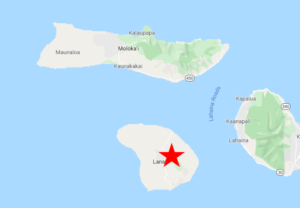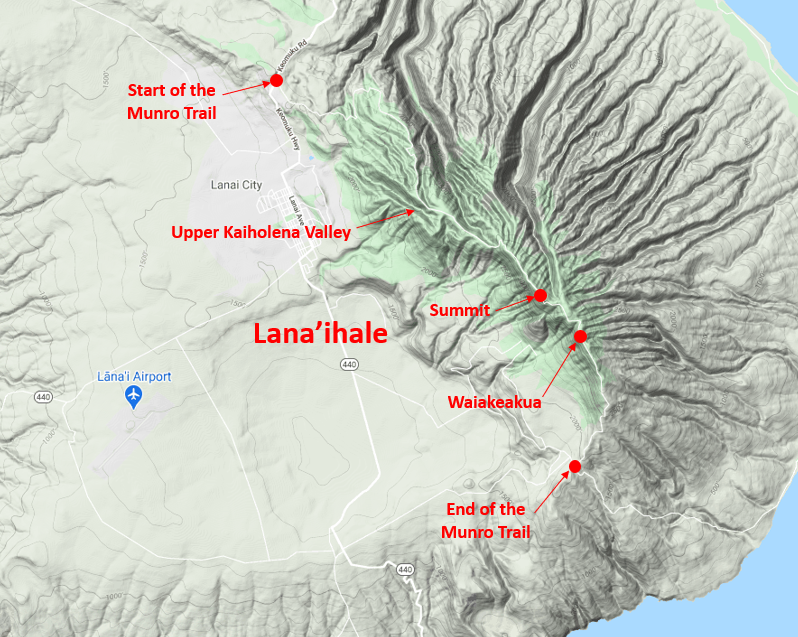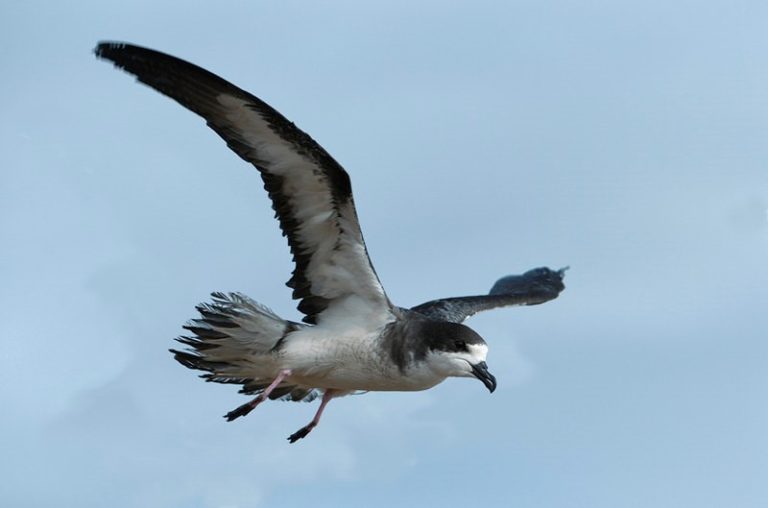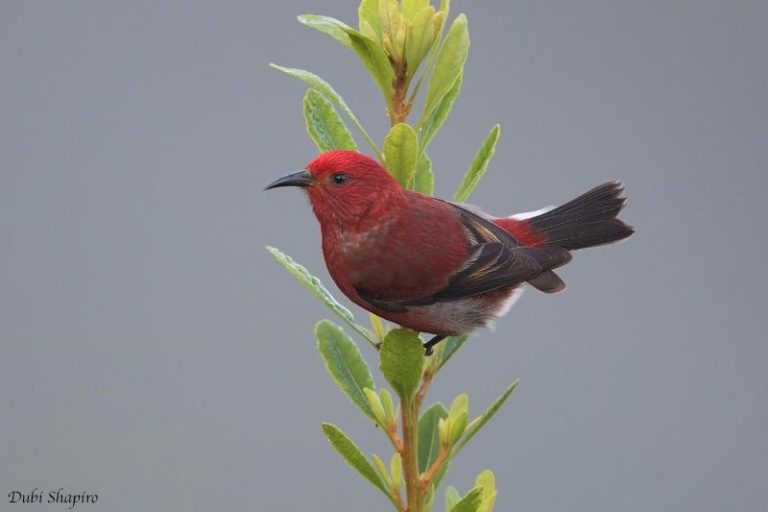Lana’ihale, Lanai, Hawaii

The ecologically ravaged island of Lanai has relatively little to offer a birdwatcher, but for the few who visit the forest on its tallest peak will attract some attention. The former home of Lanai’s two distinctive endemic but long-extinct honeycreepers, the Lanai Hookbill and the Maui Nui Akialoa, currently supports what might be the largest breeding colony of Hawaiian Petrels.
Orientation
Directions
To reach Lana’ihale, drive north out of Lanai City on Keomuku Road. After about one mile, turn right onto the Munro Trail, which is paved at first but soon becomes a rough dirt road and climbs the tallest hills of the island. The Lana’ihale summit is about five miles from the junction. This road should be attempted only with a high-clearance four-wheel-drive vehicle (or on foot, etc.) and becomes treacherous to all vehicles after rains.
Birdfinding
Lana’ihale can refer to either the highest point on Lanai (i.e., the summit) or to the uplift as a whole, which is the eastern side of an ancient volcanic crater. The rough access road that mostly follows this ridgeline is the Munro Trail, named for George C. Munro, the naturalist who best documented its flora and fauna. Some visitors may enjoy walking in his footprints and listening for the ghosts of what he saw.
Munro was the only person who recorded observations of the bird named for him, the Lanai Hookbill (Dysmorodrepanis munroi). These observations were adjacent to the Munro Trail in the Kaiholena Valley and at Waiakeakua. Munro was also the last person to report an observation of the Maui Nui Akialoa (Akialoa lanaiensis), which was known only from the forests along the Munro Trail.

The Lanai Hookbill was last observed in 1918. © Nancy Payzant

Very few native birds have been recorded at Lana’ihale in the 2000s. The ones likely to be of greatest interest to visitors are three seabirds either known or suspected to breed at the upper elevations: Yellow-billed Tropicbird, Hawaiian Petrel, and Newell’s Shearwater. The Hawaiian Petrel, in particular, is thought to breed in significant numbers—estimated at 2,000 – 3,000 pairs, which would make this the largest colony of the species. To see or perhaps only hear the petrel, the odds are best between March and August around dusk when the adults return to their burrows.

Hawaiian Petrel breeds in numbers at Lana’ihale. © Jim Denny

The Apapane appears to be Lanai’s last native songbird. © Dubi Shapiro
Lanai supports few native landbirds, with only Apapane believed to persist in the forest of Lana’ihale. Introduced species likely to heard or seen along the Munro Trail include Wild Turkey, Gray and Erckel’s Francolins, Japanese Bush-Warbler, and Warbling White-eye. Visitors should also be alert for introduced quail. Both California and Gambel’s Quails were reportedly introduced to Lanai in the mid-1900s and both have been reported over the years, but only Gambel’s is generally believed to have become established—and the current status of both species seems unclear.
Notes
When to Visit
The Hawaiian Petrel’s breeding season is roughly March to August. Adults return to their nests around nightfall.
Hazards & Hassles
The Munro Trail becomes dangerously slippery when wet. The general advice is not to attempt it in any kind of vehicle when it becomes muddy.